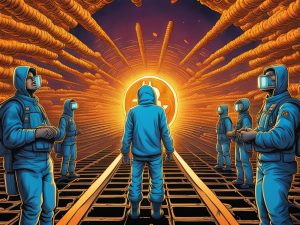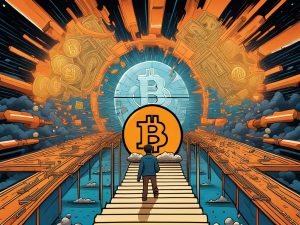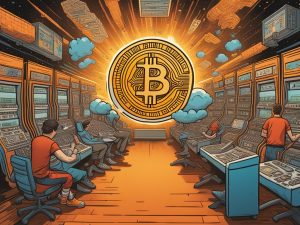Decentralized Stablecoins: A Safer Alternative to Centralized Ones?
Stablecoins are assets pegged to the value of another asset, typically a fiat currency like the dollar. The first generation of stablecoins, such as Tether, rely on a basket of assets including cash reserves to maintain their price.
However, some argue that centralized stablecoins introduce risks due to their reliance on a single entity and lack of transparency. Decentralized stablecoins aim to address these issues by using algorithms instead of cash reserves.
TerraUSD (UST) is an algorithmic stablecoin created by Terraform Labs. It maintains its peg to the U.S. dollar through a network of arbitrageurs who trade Terra’s cryptocurrency, LUNA. LUNA also serves as a governance token for the protocol.
Who Created Terra?
Terra was created by Terraform Labs in 2018, founded by Do Kwon and Daniel Shin.
How Does Terra Work?
Terra maintains the equilibrium of its stablecoins through minting and burning tokens, as well as incentivizing arbitrage. When you want to buy UST, you need to mint it by paying with LUNA. The protocol burns the LUNA, reducing its supply and increasing its price. The same process happens in reverse when minting LUNA.
Arbitrageurs play a crucial role in keeping the price of UST stable. They take advantage of small price discrepancies by buying and selling LUNA and UST. This mechanism applies to other stablecoins within the Terra ecosystem as well.
What Else Makes Terra Special?
Terra is built on the Cosmos ecosystem, which allows for independent app-specific miners instead of relying on proof-of-work mining. Terra coins can be used within applications built on the protocol and can also be used across blockchains through the Mirror Protocol.
In September 2021, Terra launched an upgrade called Columbus-5, which added functionality for interoperability with other blockchains.
The Future of Terra
The future of Terra’s protocol depends on the future of stablecoins. Will centralized stablecoins dominate the financial system, or will decentralized alternatives gain traction? The success of Terra also relies on continued interest from arbitrageurs in UST.
The 2022 UST Crash
In May 2022, Terra’s native stablecoin UST lost its dollar peg during a wider crypto market crash. UST plummeted to as low as $0.30 and failed to regain its peg despite efforts to stabilize it. The de-pegging event also drew regulatory attention.
The instability of UST put the Terra ecosystem at risk since it is the primary stable asset used for decentralized finance activities on the network. Without an effective stablecoin, these activities become risky.
Hot Take: The Risks and Potential of Decentralized Stablecoins
Decentralized stablecoins like TerraUSD offer an alternative approach to maintaining price stability without relying on centralized entities or vast reserves of cash. While they aim to address governance issues, their success depends on factors like arbitrageur interest and regulatory scrutiny. The recent UST crash highlighted the challenges faced by algorithmic stablecoins and raised questions about their future and regulation. However, decentralized stablecoins continue to play a significant role in the evolving landscape of cryptocurrencies and decentralized finance.





 By
By
 By
By
 By
By
 By
By
 By
By